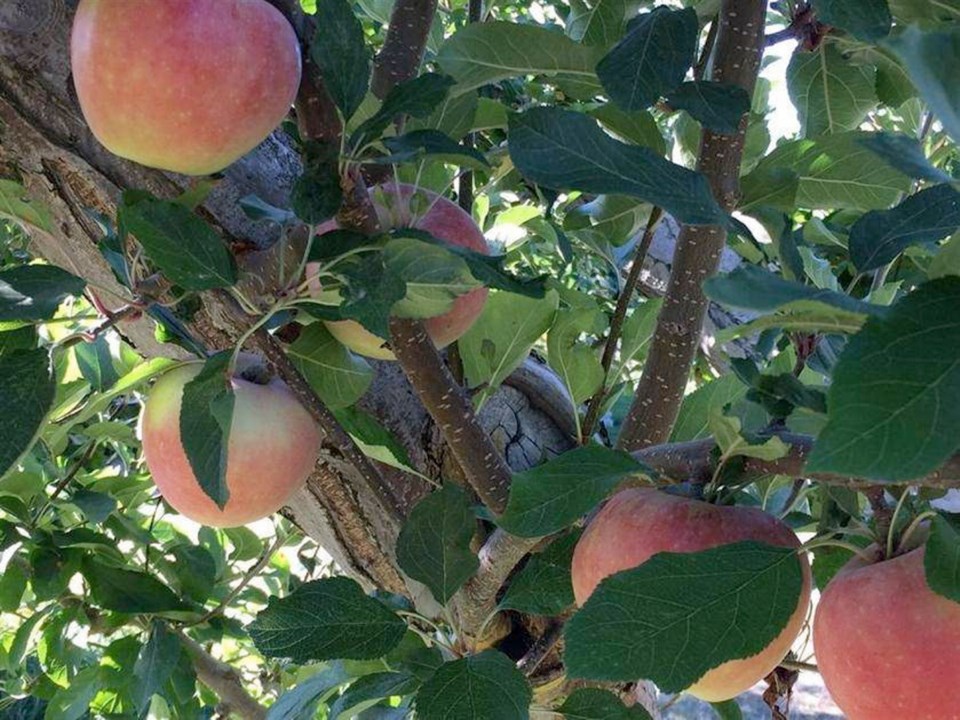The Okanagan, alone among apple-growing regions of North America, has been spared the apple maggot.
So far.
According to a recently created website called the Apple Maggot Prevention Project, it’s only a matter of time before the apple-ravaging pest completes its continental invasion.
The provincial Department of Agriculture, federal Food Inspection Agency and the B.C. Fruit Growers’ Association are all keeping their eyes peeled for the pest.
“(Apple maggots) present zero risk to human health,” Glen Lucas, general manager of Fruit Growers’, said. “The economic cost would be to growers in terms of lost production, depending on how much damage there would be.”
In 2015, two apple maggots were discovered in a residential apple tree in West Kelowna. An extensive search of the Okanagan region — which includes the Thompson, Similkameen and Shuswap valleys — the past two summers did not turn up any more, although the final results from this summer’s sweep are still being assessed, Lucas said.
The apple maggot (Rhagoletis pomonella) is native to the East Coast and was first found in Ontario orchards in 1896, according to the Canadian Food Inspection Agency.
“It has been a serious pest in Canada for more than 100 years,” the agency’s website says. “Apple maggot is now considered widespread throughout Eastern Canada, with the exception of Newfoundland.”
By 2006, the apple maggot had made its way west to the Lower Mainland, Fraser Valley, Vancouver Island and Washington state. By 2013 it had migrated to Prince George, the agency said.
The Okanagan region grows 30 per cent of Canada’s apples, according to the Apple Maggot Project.
“This is threatened by the impending arrival of the invasive apple maggot pest,” according to the website created by UBC Okanagan biology graduate student Brian Muselle.
Apple maggots do their damage when fruit flies lay eggs under the skin of an apple. The hatched maggots burrow through and eat the fruit prior to maturing.
Once the apple falls to the ground, mature larvae depart the fruit, leaving behind a honeycomb of brown tunnels and holes, according to the Canadian Food Inspection Agency. Infected apples become misshapen and dimpled.
Adult flies have a distinctive wing pattern of black bands in the form of an F, and are slightly smaller than house flies.
Were the maggots to one day show up in the Okanagan, spraying would probably be one answer, Fruit Growers’ Lucas said. Another might be something like the sterile-insect release program that was successful in beating back the codling moth, a regular apple-tree pest.
Once sterile moths were released into orchards (thereby interfering with the number of eggs laid by wild moths), damage to apples dropped significantly, Lucas said.
“We used to suffer an average of five-per-cent damage,” he said. “It’s down to less than 0.2 per cent now.
“I think the apple moth could be in that category if it became a serious pest for apples. We’d have to go through a quick learning curve to see how the life cycle works in our climate.
“Can we control the apple moth? Can we isolate it? Those are the questions we are asking.”



